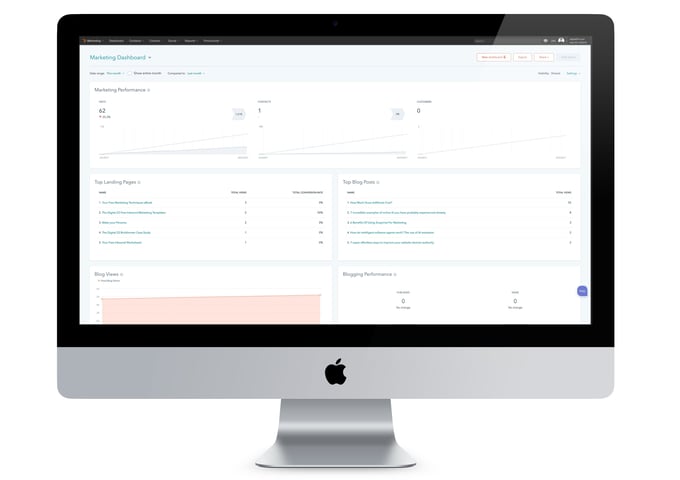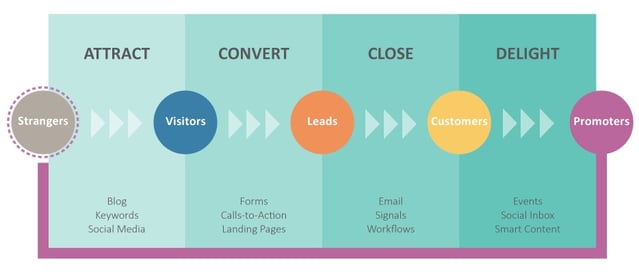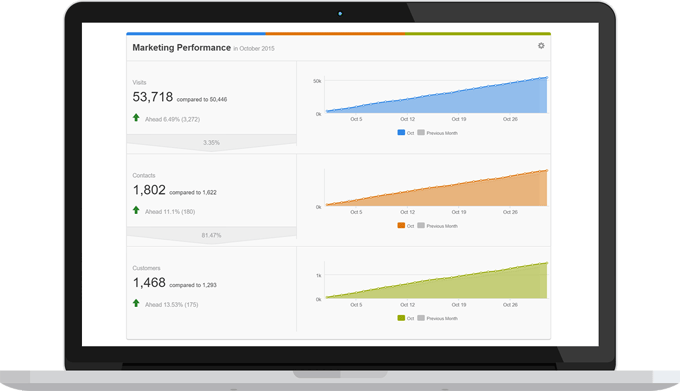The benefits of Inbound Marketing and blogging as a whole are fruitful, but the age old question...
At Digital 22, we are always eager to get young people interested in inbound marketing, allowing them to have some work experience at an early, yet impressionable age.
Brandon Bennett joined us on work experience last week, and is this week’s blog contributor, despite being only 14 years old. Brandon is still in high school and his interests include marketing, football (an avid Manchester City fan), and writing, who one day aspires to become a writer; however, we think he’s well on his way already.
Whilst he was here, he helped gather blog images, conducted research, and learned about the content creation process, as well as inbound marketing as a whole.
So, without further ado...
The Complete Beginner's Guide To Inbound Marketing
Inbound marketing. What is it? How does it work? Why use inbound marketing? If you are asking these questions, you are in the right place because I am going to let you into my complete beginner’s guide to inbound marketing.

Introduction To Inbound Marketing
Inbound marketing is simply a sort of methodology that helps a business/company earn a potential client's attention. Inbound marketing is often used by smaller companies, rather than large companies like Coca-Cola.
The reason it works best for smaller companies (rather than corporations) is due to inbound marketing being a way to get noticed and a way to drive traffic to websites. HubSpot says, ‘78% of people search for products or services online,’ which makes inbound a great tool for generating online attention, a better tool than buying ads in a magazine, for example.
Reasons To Use Inbound Marketing
An excellent reason to use inbound marketing is to build momentum, as leads will be drawn over time through a steady buildup of inbound content and recognition. In addition to this, older outbound strategies are no longer effective; for example, emails, cold calls, and flyers which are no longer useful as people tend to ignore them.
The reason behind a substantial amount of companies using inbound marketing is because it promotes long-term growth, as when you use inbound marketing, it doesn't just go away like outbound methods. Finally, inbound marketing builds trust between company and client which is good in a modern-day world, as the more trust a client has for the company, the more money they will be ready to invest.

The State Of Inbound Marketing & SEO
Many people mistake inbound marketing as just another fancy name for SEO. However, it is not…
| Inbound Marketing | SEO |
| Your company focuses on where your ideal customer interacts and creates content accordingly. | Your company focuses on showing highly on search engines in hopes your customer will see it. |
| A long term strategy for customer acquisition and memorable user experience, encouraging repeat engagement. | A channel-specific strategy for quick wins on traffic, even if they're not likely to convert again. |
| Visitors are earned through social media, organic SERP listings, paid ads, and email referrals. | Visitors come entirely from keyword-rich organic SERP listings. |
| Your efforts are focused on the person you want to communicate with, beyond keywords. | Efforts are aimed on the keywords you want to show for, not the people. |
| People are the focus. | Keywords and search engines are the focus. |
Why Inbound Marketing Is The Future Of Marketing
Outbound marketing, one of the most commonly used areas of marketing, generally refers to the company's use of media for advertisement, such as TV and radio. A source from HubSpot says generating leads through inbound marketing costs 61% less than leads generated from traditional outbound strategies. Typically, the average lead gained from average outbound marketing costs $346, whilst inbound marketing usually costs around $135 for the average lead. So inbound marketing is cheaper.
Additionally, inbound marketing is the future of marketing because it builds relationships between company and client. Inbound is also considered less annoying as outbound marketing because inbound is more about the customer/client wanting to read your blog content or what is on your website.
How Do I Start Inbound Marketing?
Inbound marketing is made extremely easy by many websites; one of the main websites is known as HubSpot. HubSpot is a brilliant as it contains all of the tools you will need for inbound marketing. The first step to inbound marketing is to draw the client in - whether through a blog post, podcast, content download, email, or video - any of those will work. After the initial strategy, inbound turns into a way of nurturing the potential client or customer into a top client.
How Good Is Inbound Marketing?
Inbound marketing, in my opinion, is the best way to market online since the success rate is high - in both the happiness of a client/customer and in terms of making money. For every $1 spent on inbound marketing, a large $8 is spent on other paid marketing channels. Inbound marketing helps market to people in a way that matches their online behaviour. 68% of marketers using inbound say strategies are effective vs 32% using outbound, according to the State of Inbound.

The Four Stages Of Inbound Marketing
1. Attract
The first stage of the inbound marketing process is attracting potential customers and clients. You do not want just any traffic to your website; you want the right traffic for your company, so you need to research your target audience. By researching, you can find out who is the right traffic to target for your site. For example, a marketing company is going to have a target audience of people with companies they can market for: the audience might be 30-40 year old men who own a company and are wanting marketing work done, so the marketing company are not going to put out football news as these people likely won't care and it is not going to make the marketing company a sale. You can attract people through blogging, SEO, content downloads, emails, pages, and social publishing.
2. Convert
After you have drawn the website visitors in, you need to try converting those visitors to leads - over time. Many companies achieve this conversion by gathering contact information, such as email addresses, phone numbers, job titles, fields, and so forth. These contacts then get something of value for free, such as an eBook or valuable information like a tip sheet. Many companies convert visitors to leads by using forms, call to actions, and landing pages.
3. Close
Now you have the lead, you are getting closer and closer to a sale. Even if you have the right leads, however, you need to work on turning those leads into customers. Different marketing tools can help you in this process - these include CRM, closed-loop reporting, email, and marketing automation.
4. Delight
Inbound marketing is all about providing content to users to generate trust and brand recognition. Even after a sale, companies tend to stay in touch with the customer as they can be a consistent buyer and promoter of the business. Companies use many tools to delight the customers for example surveys, calls to action, text, and social monitoring.

My Tips On Inbound Marketing
Tip 1: Blog, Blog and blog a bit more.
Studies show businesses and companies that blog receive much more traffic and links to their site than those who do not; blogging can also attract ideal customers and adds value to the site.
Tip 2: Social media is key to success.
Social media is a great tool to drive traffic, as you know Facebook alone has over 2 BILLION monthly users. Use Facebook, Twitter, LinkedIn, Google+, Snapchat, YouTube, and Instagram to drive traffic.
Tip 3: Calls to action = direct traffic.
Use calls to action at the end of a blog post; if the reader has enjoyed the content, they will likely click this CTA to get the ‘monthly subscription’ or ‘free eBook.’ This way, you can get their email and traffic the reader into a lead.
Tip 4: Use customer reviews to create credibility.
Using customer reviews can significantly boost sales since, if a customer writes a trusted review, it can lead to the customer trusting the company more.
Tip 5: Create sales videos and other sales focused content.
It is proven that people are more likely to buy from a company that creates product videos and spec sheets. 61% of people say they are more likely to buy from a company who makes product videos.
Tip 6: Have impressive customer support
Having impressive customer support will not only make the customer trust you more but they are also more likely to stay with you as you can get things done and are not wasting time.
Tip 7: Use survey and feedback tools.
Feedback is so useful for a new company as they do not have as much experience as an older company that has learnt from its mistakes. With feedback, your customers can give negative and positive comments and inform you of what they like and what they dislike, which can help improve your business and maintain what your customers think is good.

So, Now You Know...
After reading this post, ‘the complete beginners guide to inbound marketing,' you will be a natural in the world of inbound marketing and be ready to use it for your business or company.
So, what are you waiting for? With this practical knowledge, take your first steps towards your first inbound marketing campaign with these easy inbound marketing templates. It really is that simple, anyone can do it!


